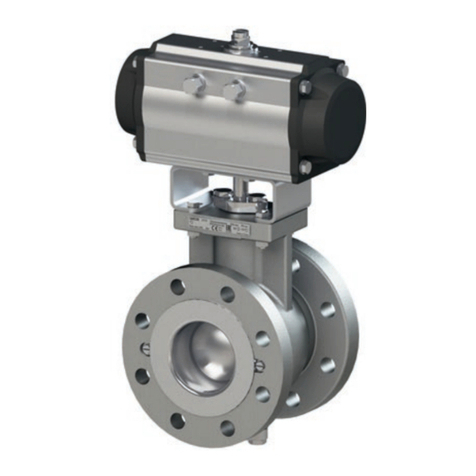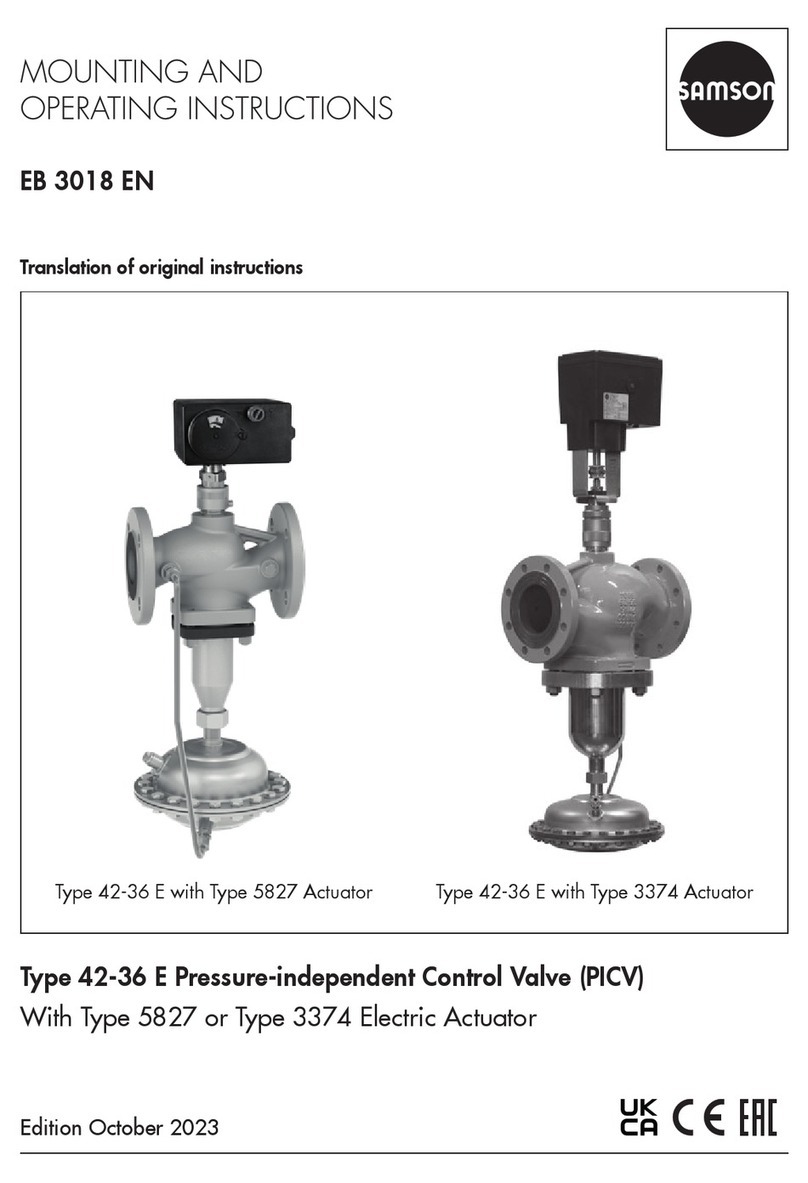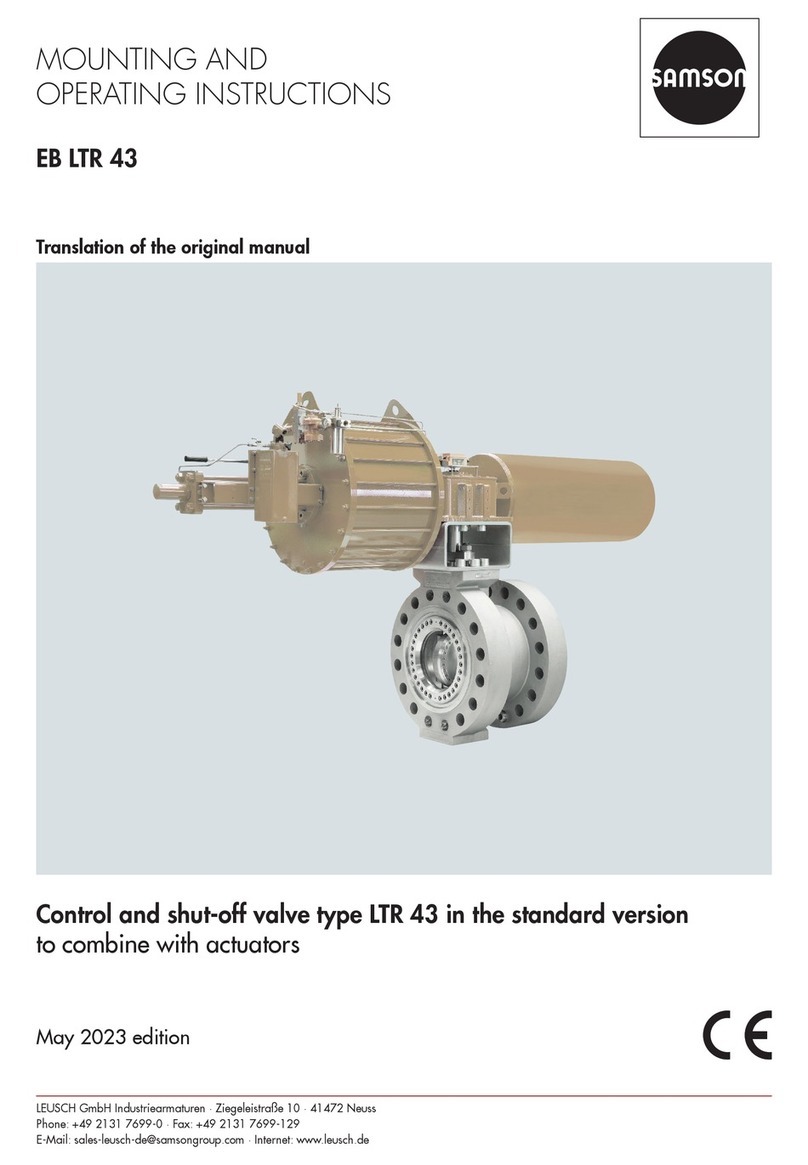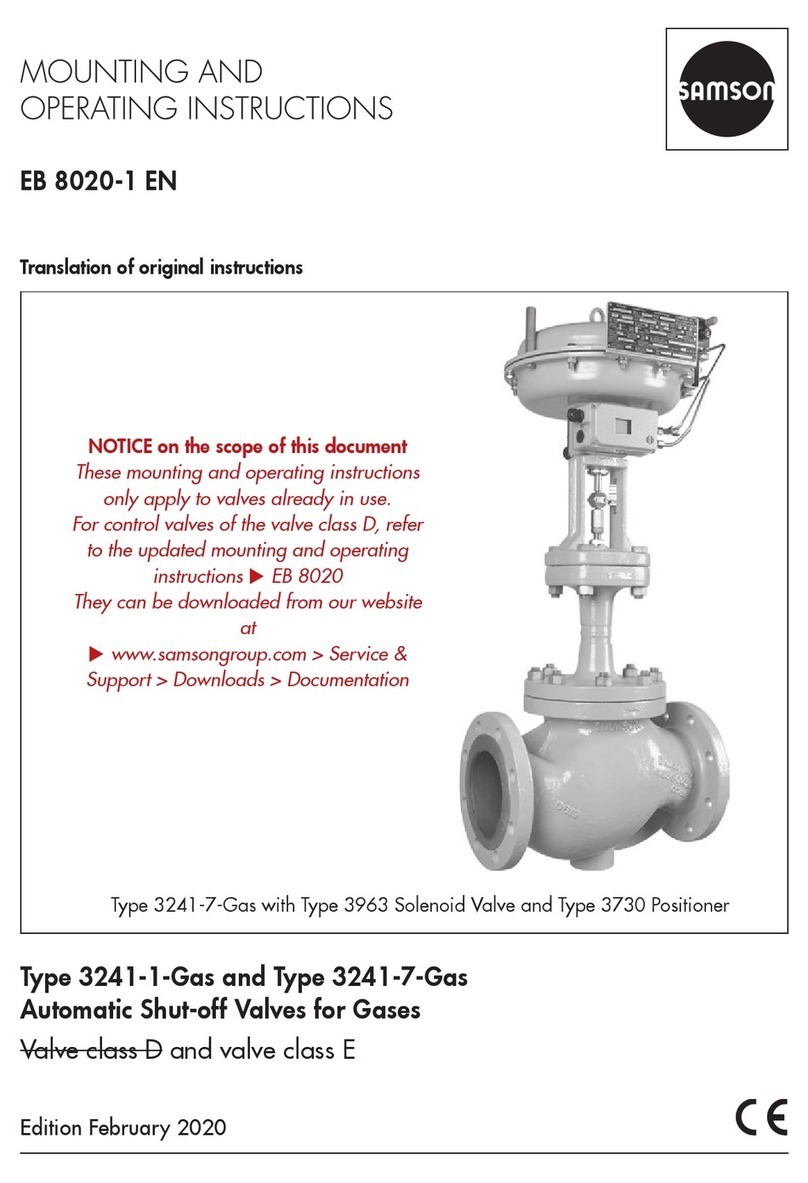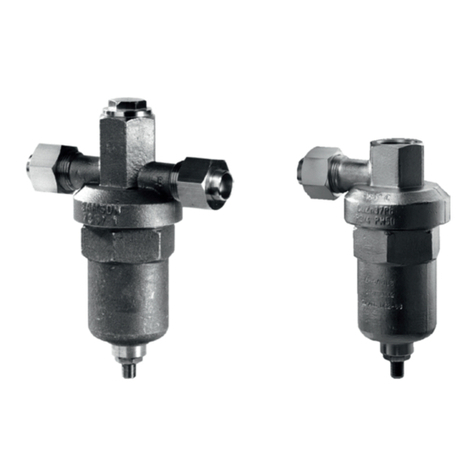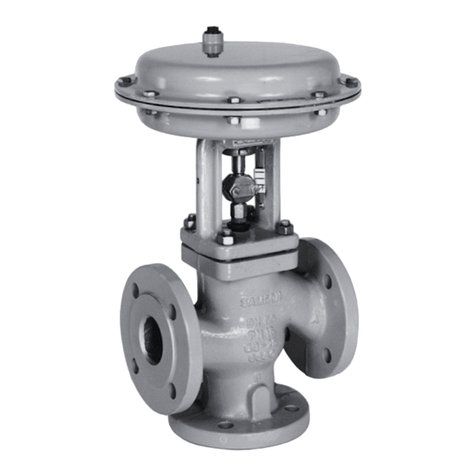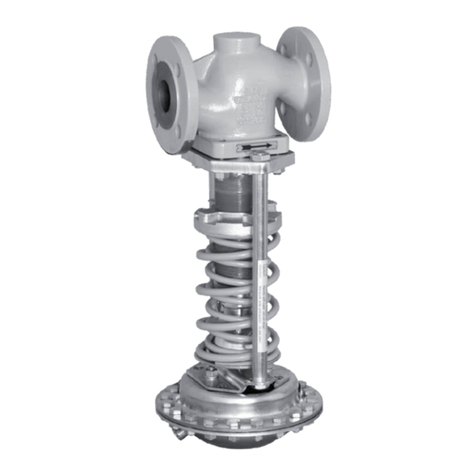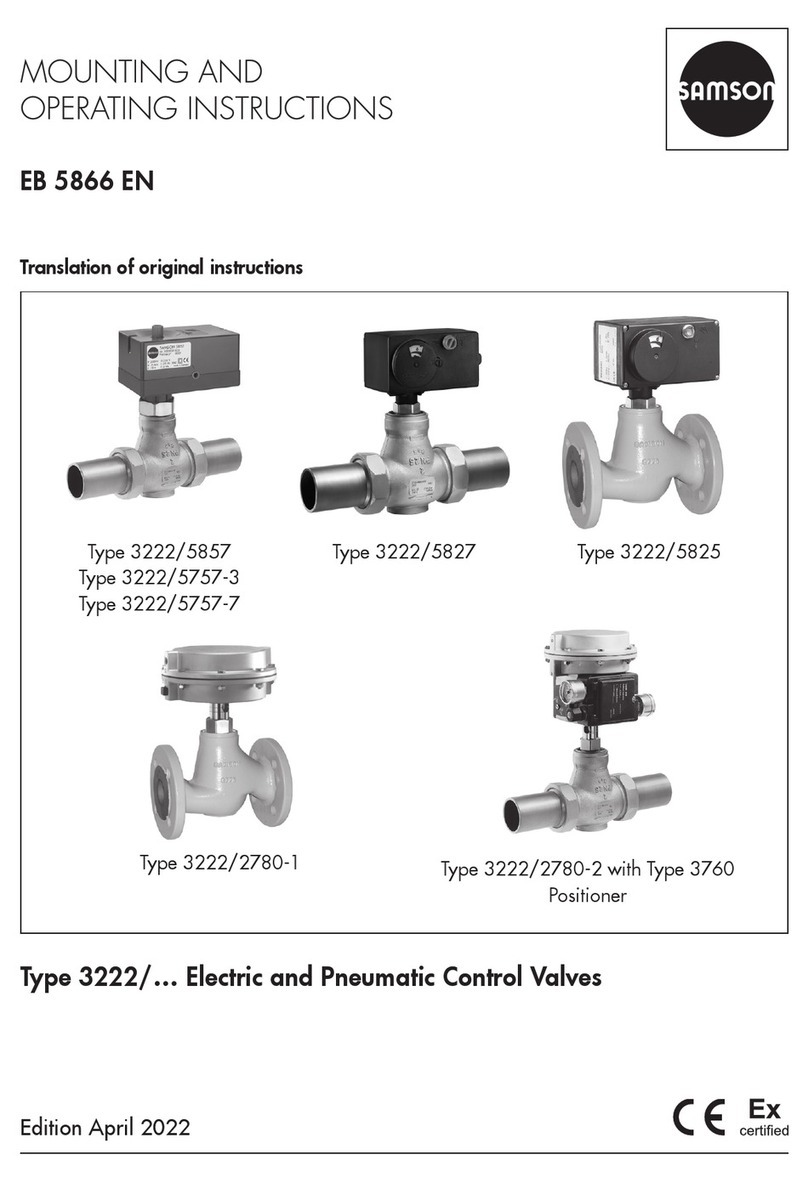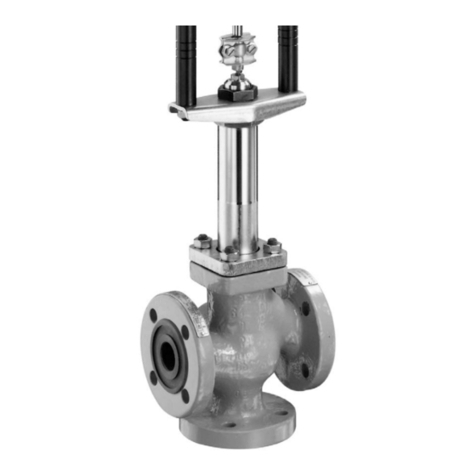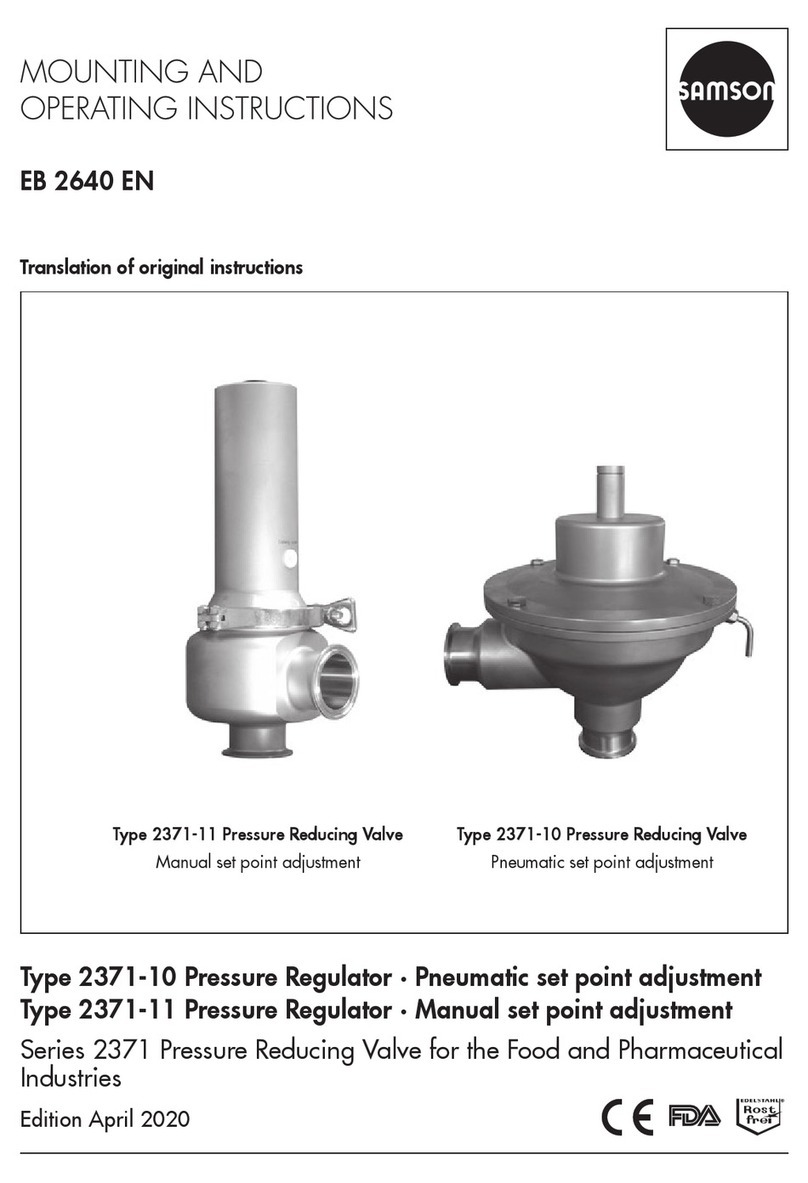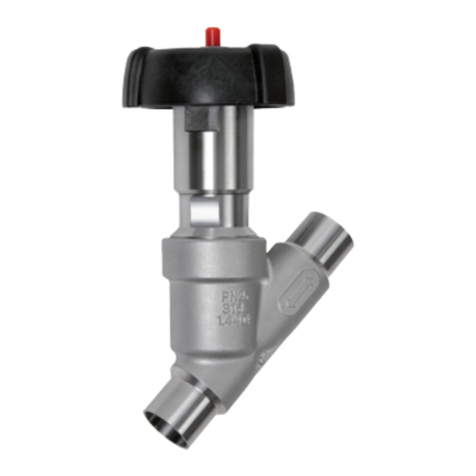
Contents
EB 8093-1 EN
1 Safety instructions and measures ................................................................1-1
1.1 Notes on possible severe personal injury ......................................................1-5
1.2 Notes on possible personal injury ................................................................1-6
1.3 Notes on possible property damage.............................................................1-7
1.4 Warnings on the device...............................................................................1-9
2 Markings on the device ..............................................................................2-1
2.1 Valve nameplate .........................................................................................2-1
2.2 Actuator nameplate.....................................................................................2-2
2.3 Material identication number .....................................................................2-2
3 Design and principle of operation ...............................................................3-1
3.1 Fail-safe positions .......................................................................................3-4
3.2 Versions .....................................................................................................3-4
3.3 Additional ttings........................................................................................3-5
3.4 Valve accessories........................................................................................3-5
3.5 Technical data ............................................................................................3-5
4 Shipment and on-site transport ...................................................................4-1
4.1 Accepting the delivered goods .....................................................................4-1
4.2 Removing the packaging from the valve........................................................4-1
4.3 Transporting and lifting the valve..................................................................4-1
4.3.1 Transporting the valve .................................................................................4-2
4.3.2 Lifting the valve...........................................................................................4-3
4.4 Storing the valve.........................................................................................4-8
5 Installation.................................................................................................5-1
5.1 Installation conditions..................................................................................5-1
5.2 Preparation for installation...........................................................................5-2
5.3 Mounting the device....................................................................................5-3
5.3.1 Installing the valve into the pipeline ..............................................................5-4
5.3.2 Removing the protective cover......................................................................5-4
5.3.3 Mounting the actuator onto the valve............................................................5-7
5.4 Testing the installed valve.............................................................................5-8
5.4.1 Leak test.....................................................................................................5-9
5.4.2 Travel motion............................................................................................5-10
5.4.3 Fail-safe position.......................................................................................5-10
5.4.4 Pressure test..............................................................................................5-10
6 Start-up .....................................................................................................6-1
